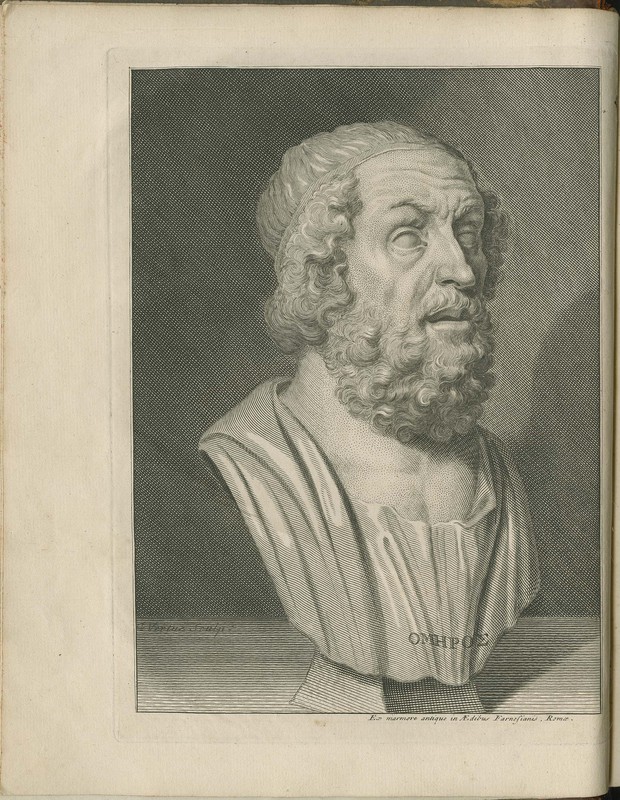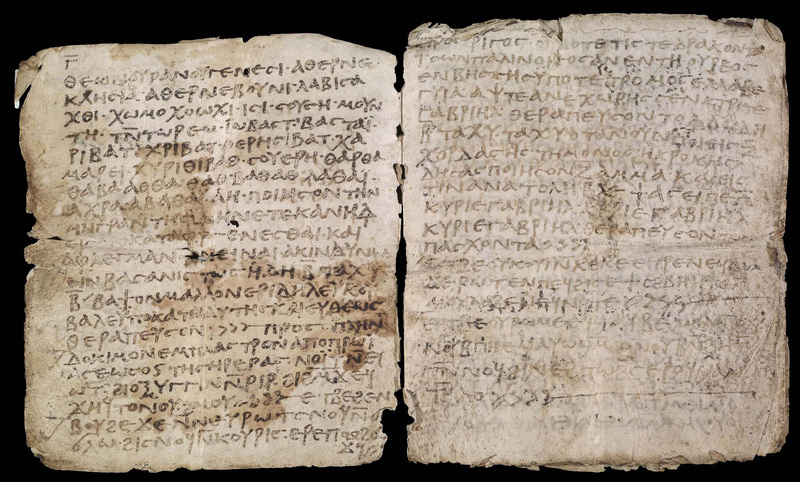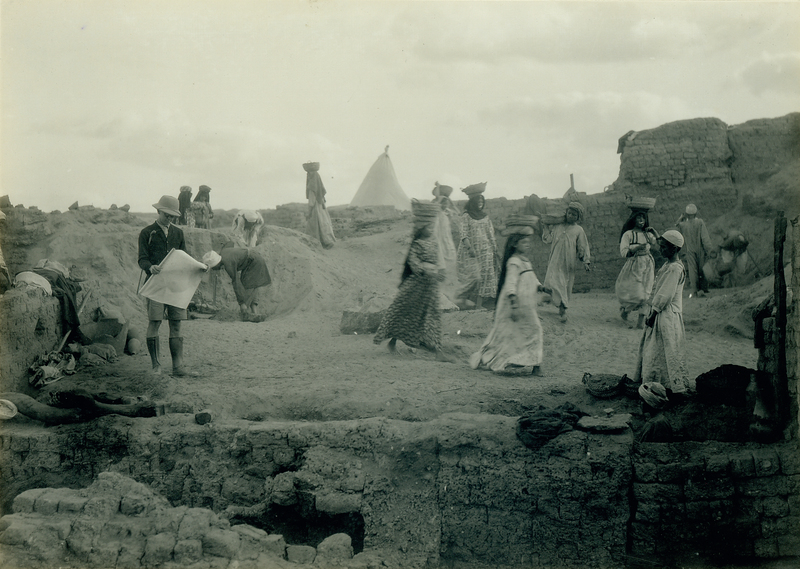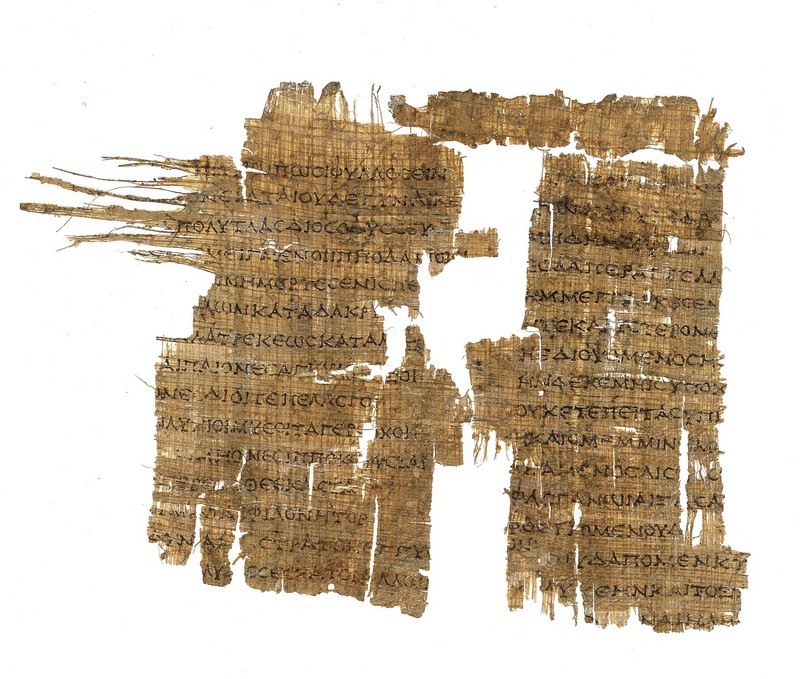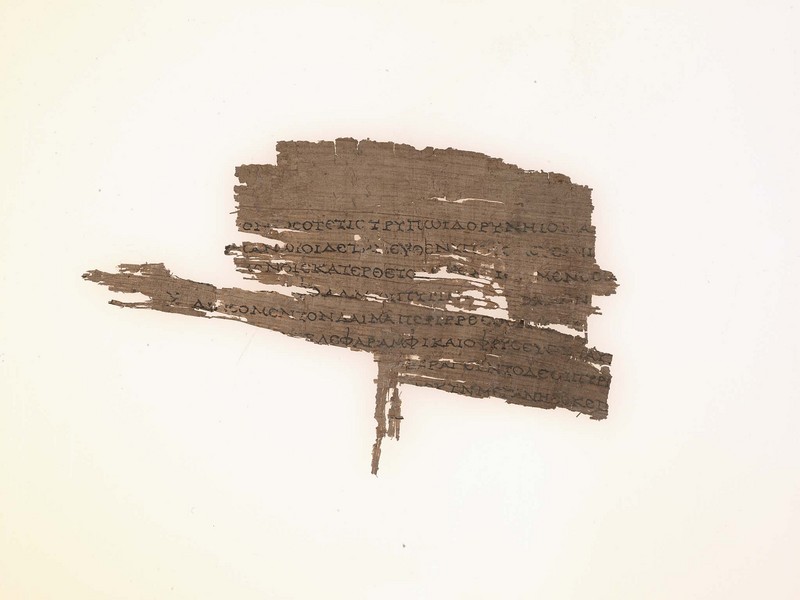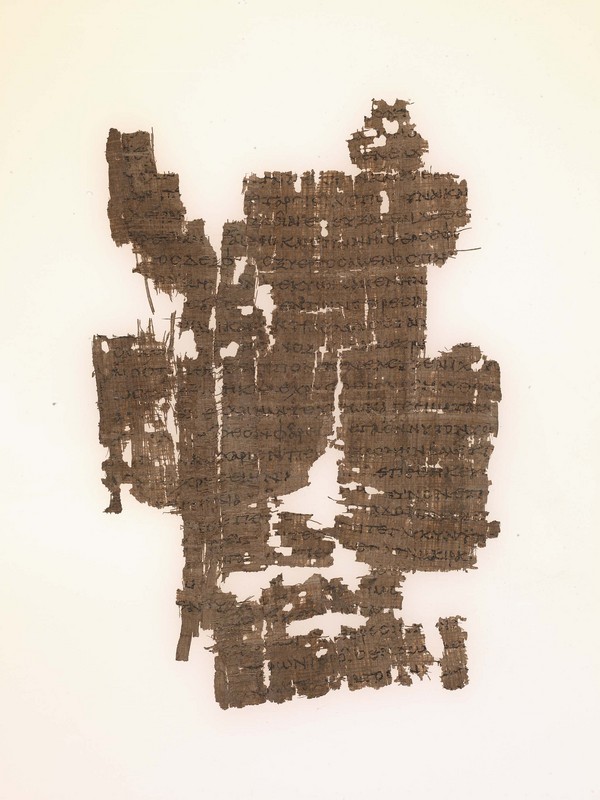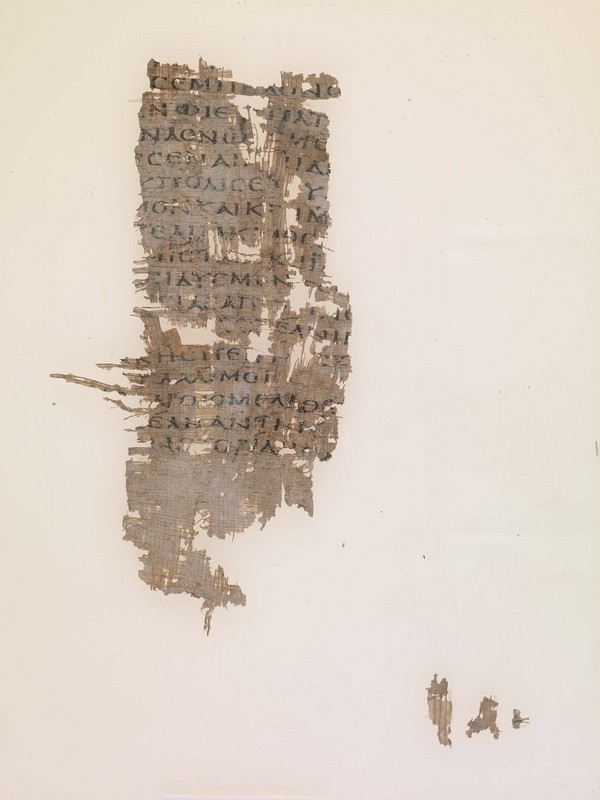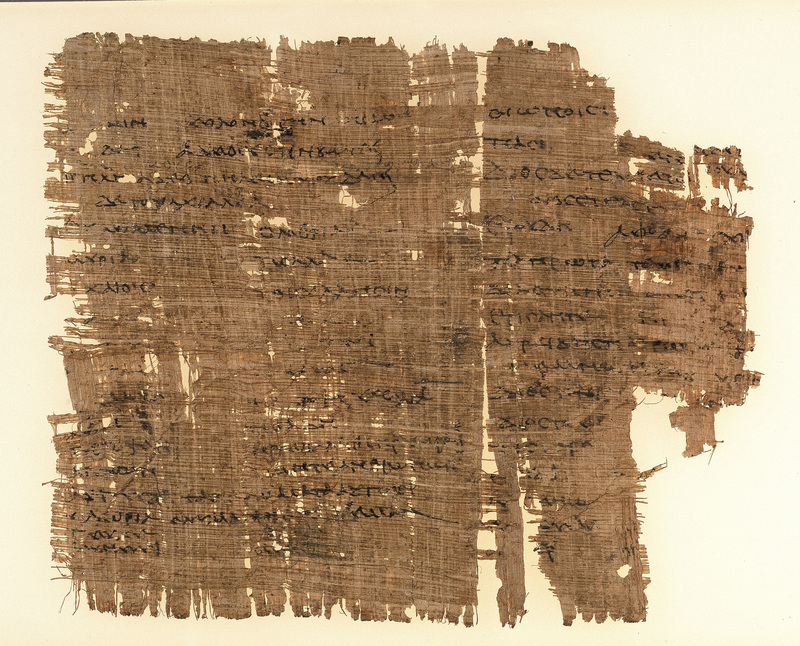Translating an Oral Tradition into Writing
It is very likely that the Iliad and the Odyssey were texts orally composed for performance and, based on that performance, written down by dictation in the second half of the eighth century B.C.E. According to some ancient authors, the Peisistradid tyrants of Athens, who governed the city from 560 to 510 B.C.E., played a major role in determining the organization of the books within each poem. In fact, the set of rolls produced under their reign became the foundation of the manuscript tradition known by Alexandrian scholars from the third century B.C.E. onward. While fifth-century writers mention the Homeric poems as well-established works, the earliest extant fragments of the poems discovered in Egypt date from the third century B.C.E. In general, the number of Homeric papyri is staggering, confirming the overwhelming presence of the poems in the education and literary culture of the ancient world. Moreover, Homer would often transgress the boundaries of conventional education to enter the realm of everyday life, like in the sixth-century Sahidic manual of ritual spells for medical problems described below, where a few lines from the Iliad were left untranslated. Perhaps the reader experienced a special healing by uttering the Greek in the original.
This small codex originally consisted of eight leaves, with the first now missing. Essentially, it contains a wide variety of folk remedies and ritual spells to combat any kind of ailments, such as gout, eye disease, pains from teething, abdominal problems, and headaches. Written in Sahidic, a dialect of Coptic, a portion of the text was translated from Greek, and in fact some of the content remained untranslated, including a citation from Iliad. 3. 33-35, which the viewer could easily recognize in the first four lines of the right page in the image. Adding the appropriate punctuation and accents, the Greek text is a follows:
ὡς δ’ ὅτε τίς τε δράκοντα ἰδὼν παλίνορσος ἀπέστη
οὔρεος ἐν βήσσῃς, ὑπό τε τρόμος ἔλλαβε γυῖα,
ἂψ δ’ ἀνεχώρησεν, ...
And even as a man at sight of a snake in the glades of a mountain starteth back, and trembling seizeth his limbs beneath him, and he withdraweth back again,...
(Trans. A.T. Murray).
Listening to Homer
In English verse, emphasis is put on whether a particular syllable is stressed or not. In Greek verse, however, the crucial point is whether a syllable is long or short. Both the Iliad and Odyssey were recited in dactylic hexameters, which are lines of verse with six metrical feet. Each of the first four feet can be either a dactyl (a long syllable followed by two short syllables — u u) or a spondee (two long syllables — —). Here is the first line of the Iliad as it should be recited:
μῆνιν ἄ | ειδε, θε | ά, Πη | ληϊά | δεω Ἀχι | λῆος
— u u — u u — — —uu — uu — X
In the following video, Professor Richard Janko (Classical Studies, University of Michigan) recites the first nineteen verses of the Iliad according to the Greek meter.
Papyri of the Iliad
Some of the manuscripts displayed in this exhibit were discovered in the ancient village of Karanis, Egypt, where Francis Kelsey, Professor of Latin at the University of Michigan, led excavations that began in 1925. Located on the northeastern edge of the fertile area known as the Fayoum and about 50 miles southeast of Cairo, Karanis became an extraordinary source for scholars not only for papyri but also for artifacts documenting daily life in Graeco-Roman Egypt.
This fairly large fragment was originally part of a papyrus roll containing book 18 of the Iliad in 14 columns with around 44 lines per column. Parts of 11 columns survive, five of which can be seen in a continuous succession here. The structure of this fragment clearly confirms the notion that, in the Roman period, a papyrus roll would have contained at least one book. Regarding the handwriting, scholars have determined that it was written by two scribes. The main scribe wrote all the columns, while the second one concentrated on making corrections, particularly adding missing marks like accents
This is the earliest papyrus fragment containing a text of Homer that is held in the Papyrology Collection at The University of Michigan Library. Scholars designate this type of papyri as belonging to the “eccentric” class of Ptolemaic papyri. In brief, it means that these papyri predate the establishment of the model for our Vulgate text. Thus, eccentric papyri contain those corruptions and extra elements that were eventually eliminated by the Hellenistic scholars working at the Library of Alexandria in the second century B.C.E. These impurities are additional lines, omission of lines, and variants that are not preserved in the Vulgate or in other scholarly editions.
Papyri of the Odyssey
The most important features of this hand are the three-bar alpha and the curved epsilon that has its tongue written in a separate stroke. Also, there is a reading contradicting the Vulgate. In line 385, the scribe wrote ανευθεν instead of ἒνερθεν.
The text offers some peculiarities such as the omission of verse 532, the spelling of Persephone as Φερσεφο[νειηι] in line 534 as opposed to the standard Περσεφονείῃ, and the presence of a macron over the alpha of καλὴν in line 545.
Interpreting Homer
The pervasive role of Homer in ancient education is attested by a large number of extant texts dealing with the language and cultural background of the poems. These texts belong to a larger conceptual category known as scholia minora, which in turn consist of marginal and interlinear commentaries, glossaries, lexica, and summaries. Essentially, they were all designed to aid teachers and students of Homer. The papyrus fragment on your right contains a glossary to the first nine lines of the first book of the Iliad. In brief, a glossary is a list of words or lemmata arranged in the order of their appearance in the poem. Each word is accompanied by a gloss containing its literal, or quasi-literal interpretation. For instance, the first line of the first two columns defines the term μῆνις (wrath) as follows:
(μη)νιν χολον ο(ρ)γην (θ)υμον
wrath: bile, natural impulse, mind.
On your right are two papyrus fragments of a lexicon found in the excavation at Karanis during the season of 1928-29. They contain entries dealing with Homeric words in πολυ-, πορ-, and ποσ-. The format of this papyrus closely resembles that of the glossary described above. The lemmata and their respective glosses are written together in a single column. If the gloss extends to the following line, this is indicated by an indentation of one letter-width. A gap of several letters also separates the words from the definitions. For instance, the first two lines of the fragment on the left can be transcribed as follows:
(πο)λυ(μητις πολυγνω)
μων πολυβοθλος
of many counsels: very
sagacious, much-counseling.
It is very possible that the Michigan papyrus is an almost contemporary witness of the work of the Alexandrian scholar Apollonius Sophista (second half of the first century C.E.). Indeed, much of the content of these two fragments can be also read in the only surviving medieval manuscript that contains Apollonius's lexicon: the tenth-century Codex Coislinianus 345.
The main scholars responsible for the textual transmission of Homer in the Library of Alexandria, founded in the early third century B.C.E., were Zenodotus of Ephesus (fl. 280 B.C.E), Aristophanes of Byzantium, head of the library at the beginning of the second century B.C.E., and Aristarchus of Samothrace, whose edition, the most influential of the three, is dated in the middle of the second century B.C.E. While all these three editions are now lost, traces of them can be read in scholia (commentaries) preserved in papyrus fragments and medieval manuscripts. In 1788, Jean Baptiste Gaspard d'Ansse de Villoison published an edition of the tenth-century codex manuscript of the Iliad known as Venetus A. Richly annotated on the margins and between the verses, at the end of almost all 24 books Venetus A includes a note on authorship (subscriptio), listing the names and roles of the four editors: Didymus (second half of the first century B.C.E) on variant readings; Aristonicus (second half of the first century B.C.E.); on critical signs; Nicanor (second century C.E.) on punctuation; and Herodian (second half of the second century C.E.) on accent. In fact, these four scholars heavily relied on Aristarchus's edition, as attested by more than 1,000 references to him.

Translating Homer into Print

